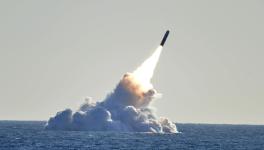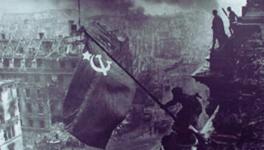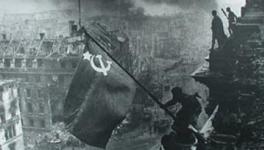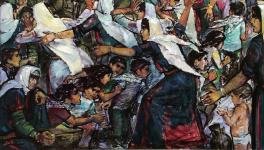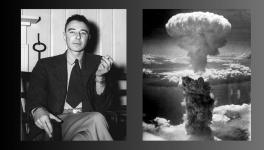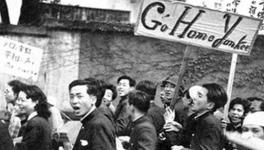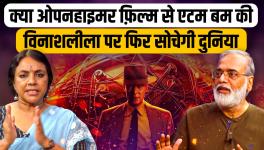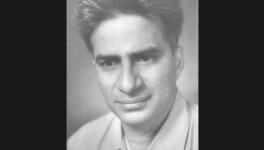Fact and Fiction About Oppenheimer and Decision to Atomic Bomb Japan—Part II
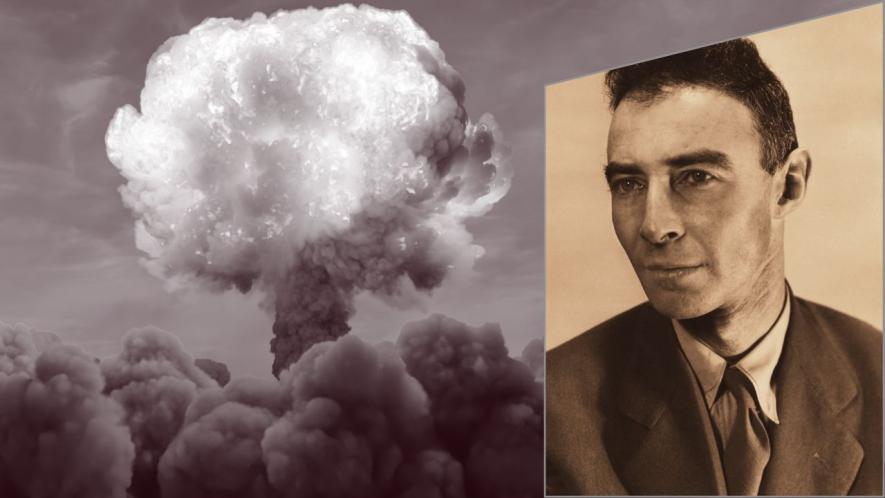
As he was a close friend of Truman, Byrnes’ first assignment was to act as the President’s personal advisor. Byrnes, the most prominent right-winger in the Democratic Party, was among the few politicians taken into confidence regarding the work on the atomic bomb.
So, in their very first meeting, under the new setting in mid-April 1945, Byrnes shared the great secret with Truman. Recalling this conversation, Truman later wrote:
“Byrnes... told me that the weapon might be so powerful as to be potentially capable of wiping out entire cities and killing people on an unprecedented scale. And he added that in his belief [that] the bomb might well put us in a position to dictate our own terms at the end of the war.”(1)
Manipulation of Meeting
According to Dr. Arthur Compton, one of four members of the Scientists Panel attached to the Interim Committee, it was Brig Gen Leslie Groves, chief of the Manhattan Project and an invitee to the meeting, who was instrumental in influencing the decisions of the eight-member Interim Committee:
“The meeting on 31 May, which I attended as a member of the Scientific Panel, was only one of a number of sessions of the Interim Committee.... Already, the strategy for the military use of the bomb had been carefully worked out. For shaping this strategy, General Groves was primarily responsible.”(2)
And further that:
“An atomic scientist who was working in close contact with him [Brig Gen Groves] at that time states that from 1945 on, Groves gave the impression of being obsessed by one intense fear, that the war would be finished before his bomb would be. Accordingly, even after the capitulation of Germany, he continued to exhort his collaborators with the incessant slogan: ‘We must not lose a single day’.”
These are the words of Robert Jungk in “Brighter Than A Thousand Suns: A Personal History of The Atomic Scientists”, published by Harcourt Brace & World Inc., New York, 1958 (p.177).
Groves himself bragged about his role in setting the tenor of the Committee’s discussion:
“It would not have looked well if I had been officially appointed to serve on a committee of civilians. But I was present at all its meetings, and I always considered it my duty to recommend that the bomb should be dropped.”(3)
Of course, Brig Gen Groves was acting according to the dictates of James Byrnes, President Truman’s representative on the Committee, whose views on the matter had a profound influence on Grove’s views.
James Byrnes: the Mastermind
Robert Messer’s account reveals the following crucial details:
“Byrnes, particularly, became personally involved in the top-secret planning for the use of the bomb both during and after the war.”
Furthermore, according to him, at the Interim Committee meeting, Byrnes first disagreed “strongly with any proposal that the Russians even be told of the bomb’s existence before it was used against Japan... Stimson later officially reported this recommendation to Truman as the Interim Committee’s considered judgement. In fact, the decision was Byrnes’s. As the President’s personal representative, he had virtually imposed the recommendation regarding non-disclosure on the other members of the Committee”.
Thereafter:
“... Byrnes proposed, and the Committee accepted, the recommendation that for maximum psychological effect, the atomic bomb be used as soon as it was ready, without warning, against an industrial target surrounded by civilian housing. Truman accepted this recommendation.”(4)
The new United States leadership was overjoyed at the thought that they would soon acquire the ideal weapon for imposing their will with impunity. The result was that such pernicious thoughts emboldened them to pursue a reckless foreign policy.
Scientific Panel Report
Let us re-examine the letter dated 16 June 1945 that Oppenheimer signed regarding the “Recommendations on the Immediate Use of Nuclear Weapons”. The preamble of the letter states: “…we recognize our obligation to our nation to use the weapon to help save American lives in the Japanese war.”
Furthermore, Para 2 states, “Others emphasize the opportunity of saving lives by immediate use…” In other words, the recommendation for the immediate use of nuclear weapons was made on the presumption that the lives of United States citizens were being lost in the Japanese war, and the only way to save those lives was by the use of atom bombs.
There was not an iota of truth in this claim: the last battle of World War II, in which the United States armed forces were engaged, was the Battle of Okinawa, which ended on 22 June 1945. The next battle, for the invasion and occupation of the Japanese mainland, was scheduled only in November 1945 since that was the time needed to assemble a large naval force to undertake that task.
In other words, the lives of United States military personnel were under no threat between 23 June 1945 and 1 November 1945. However, the scientists on the Manhattan Project had no idea of the war situation in Japan. This is admitted by Oppenheimer himself during the hearing before the United States Administration’s Personnel
Security Board, Washington DC, over April-May 1954:
“We didn’t know beans [anything at all] about the military situation in Japan. We didn’t know whether they could be caused to surrender by other means or whether the invasion was really inevitable. But in the backs of our minds was the notion that the invasion was inevitable because we had been told that.” (p.34)
Considering all these circumstances, how can scientists be held accountable for a so-called “recommendation” that was practically forced out of them after the decision to use nuclear weapons on Japan had already been taken at the highest level?
As has been pointed out in the first part of this write-up, Byrnes had alerted President Truman to the possibility that “the [atom] bomb might well put us [the United States] in a position to dictate our own terms at the end of the war”.(5)
Furthermore, Churchill, intoxicated by the success of the first atomic test, was “already seeing himself capable of eliminating all the Russian centres of industry and population”. He had also “painted a wonderful picture of himself as a sole possessor of these bombs and capable of dumping them where he wished, thus all-powerful and capable of dictating to Stalin”.(6)
Other Crucial Factors
At least two other crucial factors more than prove that the scientists had no role in the decision to use nuclear weapons on Japan:
(a) the undue delay in holding the Potsdam Conference;
(b) the decision to issue an unconditional ultimatum to Japan to surrender.
Truman was intent on delaying the Potsdam Conference by about ten weeks after the war ended in Europe because that was the minimum time required for conducting the first atomic test. Truman’s daughter has admitted that it was so:
“My father had stalled on a date for the conference because he wanted to put it off until the atom bomb was tested.”(7)
Similarly, the terms of the ultimatum, which was issued on 26 July 1945, were such that they were wholly unacceptable to the Japanese. However, the terms were suitably modified immediately after the use of the atomic bombs. Commenting on this jugglery, Hanson Baldwin, then military editor of The New York Times, said:
“... the United States demanded unconditional surrender, then dropped the [atom] bomb and accepted conditional surrender [i.e., it agreed to retain the status of the Emperor], a sequence which indicates pretty clearly that the Japanese would have surrendered even if the bomb had not been dropped, had the Potsdam Declaration included our promise to permit the Emperor to remain on his imperial throne.”(8)
As is evident, the tactic of the United States government was to prevent Japan from surrendering before atomic bombs were dropped. However, there was no guarantee that the use of just two atomic weapons would have forced Japan to surrender [the United States did not have any more atomic bombs in its stockpile at that time].
Therefore, the entry of the Soviet Union into the war against Japan on 8 August 1945 was a critical factor. This is admitted by none other than Truman:
“It is my opinion that after the Russians enter into the war the Japanese will very shortly fold up.”(9)
That is precisely how Japan was forced to surrender.
As events leading to the heinous crimes against Hiroshima and Nagasaki vividly show, the unleashing of the atomic bomb resulted from the insatiable desire of the right-wing leaders of the United States and Great Britain to dominate the world. Attempts to implicate atomic scientists in this crime would be tantamount to absolving the real culprits of their hideous deeds.
For no rhyme or reason, Oppenheimer is being made a scapegoat while the name of the real culprit, James Byrnes, who instigated the atomic bombings, practically lies hidden from history.
The author is joint secretary of the Delhi Science Forum and author of The Meaning of Hiroshima Nagasaki: The Decision to Use Atomic Bombs on Japan & Its Implications for Humankind, 1990. The views are personal.
(This is the concluding part of a two-part series. The first instalment of this article can be read here.)
References:
- Harry S Truman, Memoirs Vol.I: Years of Decisions, Doubleday & Company, Inc., New York, (1955), p.87
- Arthur H Compton, Atomic Guest: A Personal Narrative, Oxford University Press, London, 1956, pp.220-221
- Robert Jungk, Brighter Than A Thousand Suns: A Personal History of The Atomic Scientists, Harcourt Brace & World Inc., New York, 1958, p.181
- Robert L. Messer (Dept. of History, Univ. of Illinois, Chicago), “The End of An Alliance: James Byrnes, Roosevelt and Truman and the Origins of the Cold War”, The University of North Carolina Press, Chapel Hill, 1982, p.102
- Harry S Truman (1955), p.87
- Arthur Bryant, Triumph In The West 1943-1946, Collins, London, 1959, pp.477-478
- Margaret Truman, Truman Speaks, William Morrow & Company Inc., New York, 1973, p.260
- Quoted in Walter Johnson, ed., Turbulent Era: A Diplomatic History of 40 Years of Joseph Grew, Hammond Hammond & Co. Ltd., London, 1953, p.1423
- Robert Donovan (White House correspondent for the New York Herald Tribune covering Truman), Conflict And Crisis: The Presidency of Harry S. Truman 1945-48, WW Norton & Company Inc., New York, 1977, p.100
Get the latest reports & analysis with people's perspective on Protests, movements & deep analytical videos, discussions of the current affairs in your Telegram app. Subscribe to NewsClick's Telegram channel & get Real-Time updates on stories, as they get published on our website.









